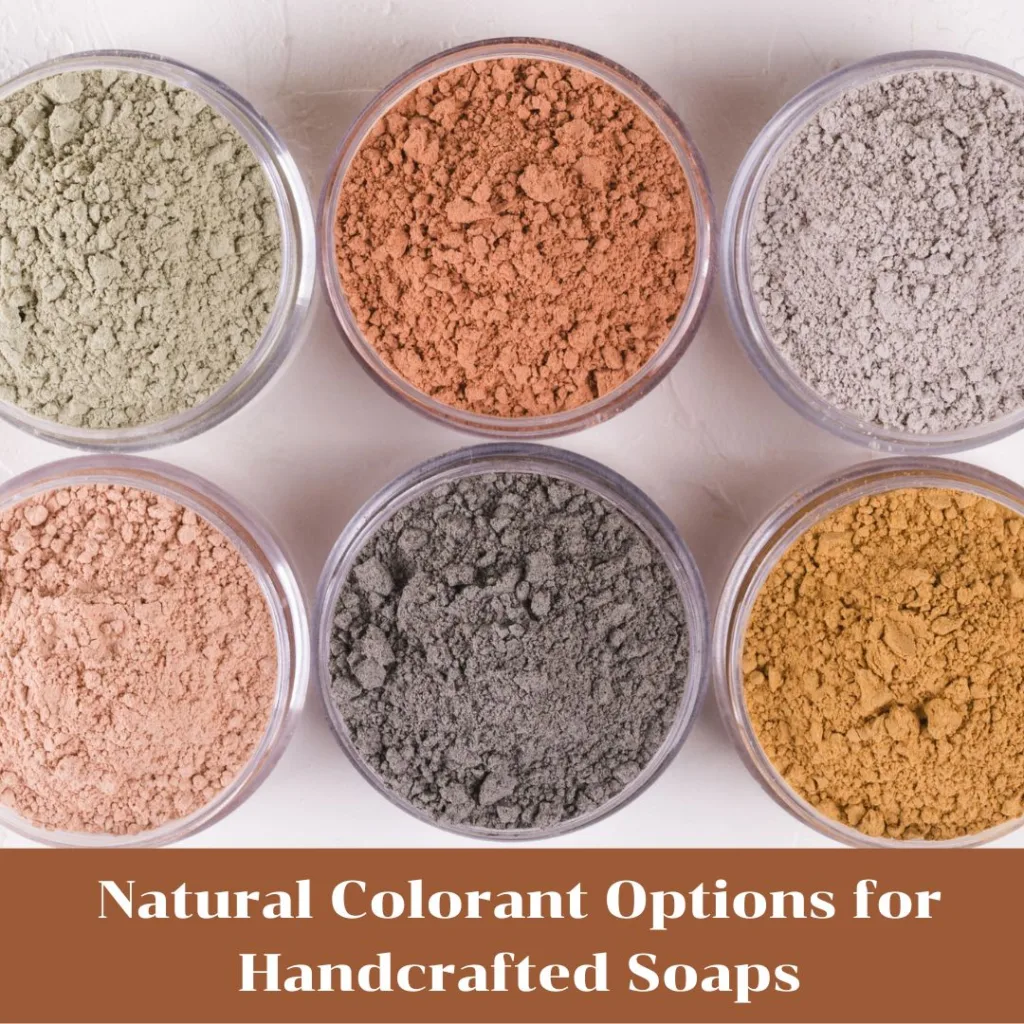Colorful and beautifully crafted soaps not only enhance your bathing experience but also make for thoughtful and attractive gifts. While synthetic dyes and pigments have been traditionally used to color soaps, many people are now turning to natural colorants for their soap-making projects. Natural colorants not only provide vibrant hues but also offer a chemical-free, eco-friendly alternative.

- Clays
Clays are excellent natural colorants for soap-making. They come in various colors, each offering unique properties for your skin. Some popular choices include:
- Kaolin Clay (White): Known for its gentle cleansing properties, it adds a soft and creamy white color to your soap.
- French Green Clay: This green clay gives your soap a lovely earthy hue.
- Rhassoul Clay: This reddish-brown clay adds a warm and rustic color to your soap.
- Herbs and Botanicals
Dried herbs and botanicals not only provide color but also add texture and exfoliation to your soap. Here are some popular options:
- Calendula: These bright yellow petals infuse a sunny and vibrant hue into your soap, along with skin-soothing properties.
- Lavender Buds: Lavender buds add a lovely purple tint to your soap and provide a relaxing, floral scent.
- Annatto Seeds: Annatto seeds offer a natural orange color, perfect for adding warmth to your soap creations.
- Spices and Powders
Common kitchen ingredients can also be used to color your soap naturally:
- Turmeric: This golden spice lends a beautiful yellow color to your soap. Be mindful of its strong staining potential. This lovely spice powder, along with it’s essential oil, can be found in our Turmeric Goat Milk Soap
- Cocoa Powder: Unsweetened cocoa powder adds a rich, brown color and a delightful chocolate scent.
- Spirulina Powder: Known for its vibrant green hue, spirulina powder offers a natural and healthy way to color your soap. This beautiful powder can be found in our Deep Sea Goat Milk Soap
- Fruit and Vegetable Purees
Fresh fruit and vegetable purees not only provide color but also contribute to the soap’s fragrance and texture:
- Pumpkin Puree: Adds a warm orange color and a subtle pumpkin aroma to your soap.
- Beetroot Puree: Creates a vibrant pink or red color and offers skin-loving properties.
- Carrot Puree: Imparts a soft orange hue and contributes to a creamy lather.
- Natural Oils
Certain infused oils can also be used for coloring:
- Alkanet Root-Infused Oil: Alkanet root-infused oil results in shades of purple or blue, depending on the pH level of your soap.
- Chamomile-Infused Oil: Chamomile-infused oil provides a gentle, pale yellow color and a calming fragrance.
Experimenting with natural colorants in your soap-making endeavors can be both fun and rewarding. Not only do these colorants add aesthetic appeal to your soaps, but they also often come with added skin benefits. Whether you’re looking to create vibrant, eye-catching designs or subtle, earthy tones, natural colorants offer a wide range of options to explore. So, gather your ingredients, embrace your creativity, and start crafting beautiful, natural-colored soaps today. Your skin—and the environment—will thank you!
